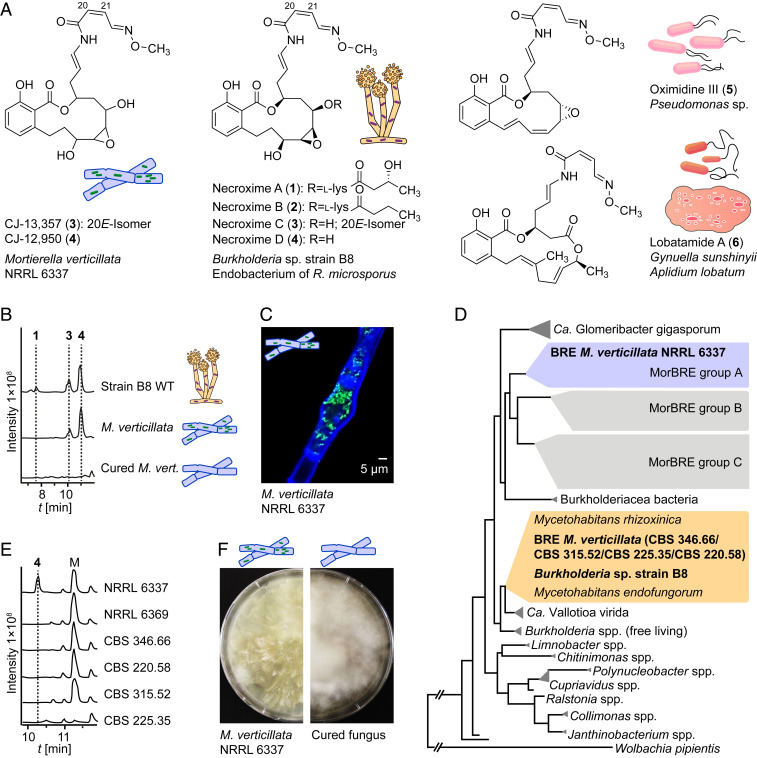Fig. 1.
Bacterial origin of cytotoxic benzolactones from M. verticillata cultures. (A) Cytotoxic lactone compounds assigned to endofungal symbionts from the fungus R. microsporus (1–4), M. verticillata (3–4), Pseudomonas sp. (5), and a tunicate and the bacterium Gynuella sunshinyii (6). (B) Metabolic profiles of extracts from Burkholderia sp. strain B8 and M. verticillata NRRL 6337 as symbiont or cured strain as total ion chromatograms in the negative mode. (C) Fluorescence micrograph depicting endosymbionts living in the fungal hyphae; staining with Calcofluor White and Syto9 Green. (D) Phylogenetic relationships of Mortierella symbionts, Burkholderia sp. strain B8, and other bacteria based on 16S rDNA. BRE, Burkholderia-related endosymbiont of Mortierella spp. (E) Metabolic profiles of extracts from M. verticillata NRRL 6337 and other necroxime-negative M. verticillata strains analyzed for endosymbionts in this study as total ion chromatograms in the negative mode. M, medium component. (F) Growth of symbiotic M. verticillata NRRL 6337 in comparison to the cured strain.

